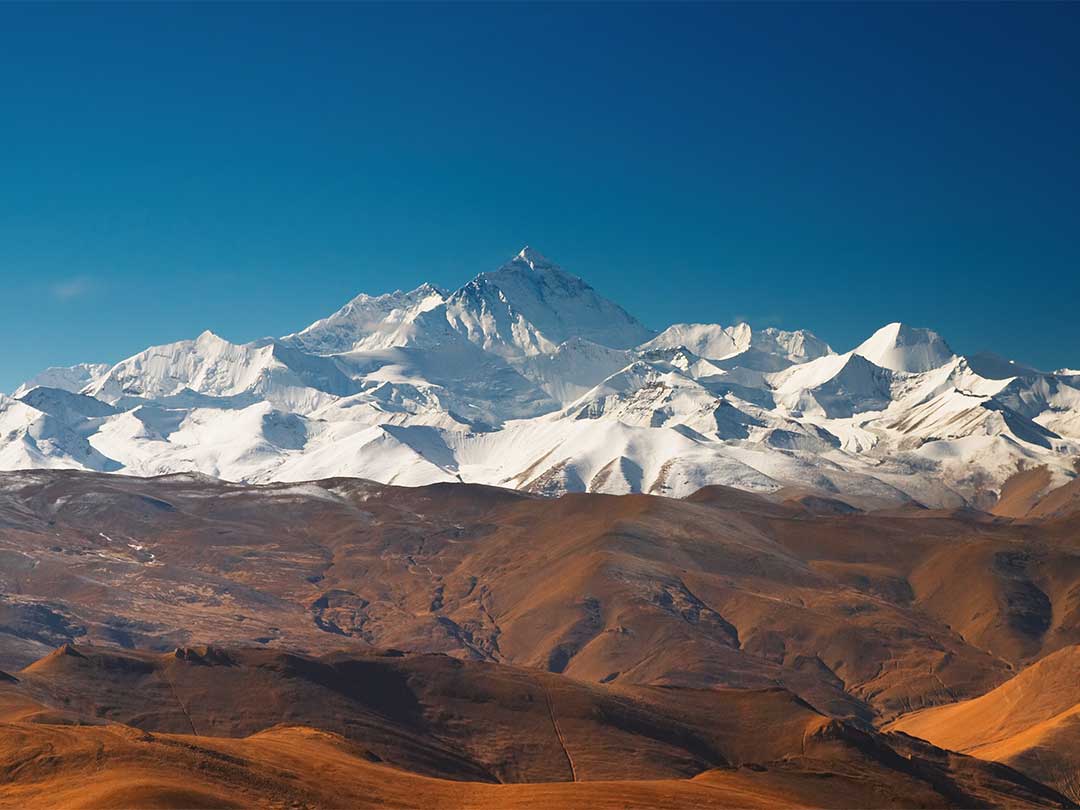Tibet, often referred to as the “Roof of the World,” is a mesmerizing region in Asia known for its rich cultural heritage, breathtaking landscapes, and spiritual significance.
Planning a trip to Tibet requires careful consideration and guidance to make the most of this unique experience.
In this complete Tibet travel guide, we will delve into all the essential aspects of visiting Tibet, including the best time to go, must-visit destinations, exploring Tibetan culture, outdoor activities, safety and health tips, and more.

Planning Your Trip
Best Time to Visit Tibet
Determining the best time to visit Tibet depends on your preferences and interests. The peak tourist season is from April to October when the weather is relatively mild and favorable for outdoor activities. However, if you prefer to avoid crowds, the shoulder seasons of April-May and September-October are ideal.
Entry Permits and Documents
To enter Tibet, you will need a Tibet Travel Permit, which can be obtained through a registered travel agency in Tibet. Additionally, foreign visitors must have a valid Chinese visa and a Tibet Group Visa if entering from Nepal. It’s essential to plan ahead and arrange these permits in advance.
Transportation Options
Tibet can be accessed by air, train, or road. The most popular route is via flight or train to Lhasa, the capital city of Tibet. Lhasa Gonggar Airport has connections to several major Chinese cities, while the Qinghai-Tibet Railway offers a scenic and memorable journey. Road trips and overland tours are also available for those seeking a more adventurous experience.
Accommodation and Food
Tibet offers a range of accommodation options, from luxury hotels to guesthouses and Tibetan-style inns. In larger cities like Lhasa and Shigatse, you will find a variety of dining options serving Tibetan, Chinese, and international cuisines. Tibetan cuisine is distinctive and includes dishes like yak meat, momos (dumplings), and butter tea.
Must-Visit Destinations
Lhasa, the Capital City
Lhasa, the heart of Tibet, is a city of immense historical and cultural significance. Visit the magnificent Potala Palace, a UNESCO World Heritage site, which is the residence of the succesive Dalai Lamas. Explore the Jokhang Temple, a revered Buddhist pilgrimage site, and wander through Barkhor Street, known for its bustling markets and traditional Tibetan architecture.
Potala Palace
The Potala Palace stands as an architectural masterpiece and an iconic symbol of Tibetan Buddhism. Marvel at its grandeur as you ascend the steps and explore the various chapels, halls, and sacred artifacts housed within its walls. The panoramic view of Lhasa from the palace’s rooftop is simply breathtaking.
Jokhang Temple
The Jokhang Temple, located in the heart of Lhasa, is one of the holiest sites for Tibetan Buddhists. Immerse yourself in the spiritual atmosphere as you join pilgrims in the kora (circumambulation) around the temple. Inside, witness the sacred Jowo Rinpoche statue, believed to be a likeness of the young Buddha.
Mount Everest
For adventure enthusiasts and nature lovers, a visit to Mount Everest is a must. The North Base Camp in Tibet offers stunning views of the world’s highest peak. Experience the thrill of being in the presence of this majestic mountain and soak in the breathtaking scenery that surrounds it.
Namtso Lake
Namtso Lake, known as the “Heavenly Lake,” is one of the highest saltwater lakes in the world. Its crystal-clear waters against a backdrop of snow-capped mountains create a picturesque landscape. Explore the serene surroundings, visit nearby monasteries, and witness the beauty of this natural wonder.
Exploring Tibetan Culture
Tibetan Buddhism
Tibetan Buddhism plays a central role in the lives of the Tibetan people. Visit monasteries such as Drepung Monastery and Sera Monastery to witness monks engaging in philosophical debates and chanting rituals. Participate in religious festivals like Losar (Tibetan New Year) to experience the vibrant culture and spiritual devotion.
Monasteries and Temples
Tibet is home to numerous monasteries and temples, each with its own unique charm. Explore the sacred monasteries of Ganden, Tashilhunpo, and Samye, which offer insight into Tibetan Buddhism and stunning architectural designs. Pay your respects at the sacred Jampa Temple in the remote town of Saga, known for its intricate murals.
Festivals and Events
Tibetan festivals are vibrant celebrations filled with music, dance, and religious rituals. The Saga Dawa Festival, held in Lhasa, commemorates the birth, enlightenment, and parinirvana (passing away) of Buddha. Other notable festivals include the Shoton Festival and the Butter Lamp Festival, each with its own significance and cultural traditions.
Local Cuisine
Indulge in the flavors of Tibetan cuisine during your visit. Sample traditional dishes like tsampa (roasted barley flour), yak butter tea, and thukpa (noodle soup). Explore the local markets for dried yak meat, Tibetan cheese, and other unique ingredients used in Tibetan recipes. Don’t forget to try momos, a Tibetan delicacy loved by locals and tourists alike.
Outdoor Activities
Trekking and Hiking
Tibet offers a myriad of trekking and hiking opportunities for nature enthusiasts. Embark on the famous Everest Base Camp trek or explore the stunning valleys of Ganden and Samye. Experience the beauty of remote landscapes, encounter nomadic communities, and challenge yourself with high-altitude hikes.
Mountaineering
With its towering peaks and challenging terrain, Tibet attracts mountaineers from around the world. Attempt to summit mountains like Cho Oyu or Shishapangma, or join guided expeditions to conquer the mighty Everest. Professional mountaineering agencies can provide the necessary permits, equipment, and support for a safe and memorable adventure.
Cycling and Motorcycling
For those seeking a thrilling adventure on wheels, cycling or motorcycling through Tibet offers a unique perspective of the region. Ride along the Friendship Highway, which connects Lhasa to Kathmandu, Nepal, and enjoy breathtaking landscapes, remote villages, and encounters with friendly locals.
Wildlife and Nature
Tibet is home to a diverse range of wildlife, including the elusive Tibetan antelope, wild yaks, and various bird species. Explore protected areas like the Changtang Nature Reserve or the Yarlung Zangbo Grand Canyon to catch glimpses of these fascinating creatures and immerse yourself in the untouched beauty of Tibetan landscapes.
Safety and Health Tips
Acclimatization to High Altitude
Tibet’s high altitude requires careful acclimatization to prevent altitude sickness. It is recommended to spend a few days in Lhasa or other lower-altitude areas before ascending to higher regions. Stay hydrated, avoid strenuous activities initially, and consult with your healthcare provider about medications to manage altitude-related symptoms.
Preventing Altitude Sickness
To minimize the risk of altitude sickness, pace yourself and allow your body time to adjust. Avoid alcohol and smoking, as they can exacerbate symptoms. Eat light, nutritious meals and stay properly hydrated. If symptoms like headaches, dizziness, or shortness of breath persist, descend to a lower altitude and seek medical assistance if necessary.
Travel Insurance
Having comprehensive travel insurance is crucial when visiting Tibet. Ensure that your policy covers medical emergencies, trip cancellations, and high-altitude activities. It’s wise to check the specifics of your coverage and understand any limitations or exclusions before embarking on your journey.
Local Customs and Etiquette
Respect for Tibetan customs and traditions is important during your visit. Seek permission before taking photographs, especially in monasteries or around religious sites. Dress modestly, covering your shoulders and knees, as a sign of respect. Avoid touching or disturbing religious artifacts and sacred objects.
Emergency Contacts
Familiarize yourself with emergency contact numbers in Tibet, including local authorities, hospitals, and your embassy or consulate. Carry copies of important documents, such as your passport and travel permits, and keep them in a secure place. It’s always better to be prepared for any unforeseen circumstances.
Conclusion of Tibet Travel Guide
A journey to Tibet is an extraordinary experience that combines natural beauty, spiritual enlightenment, and cultural immersion. From the enchanting city of Lhasa to the majestic Mount Everest and the vibrant monasteries, Tibet offers a world of wonders to explore. Embrace the unique traditions, immerse yourself in the spiritual aura, and create memories that will last a lifetime. Plan your Tibet adventure today and embark on a journey like no other.
FAQs Tibet Travel Guide
Q: Is it safe to travel to Tibet?
A: Yes, Tibet is generally safe for travelers. However, it’s important to be mindful of the high altitude and follow safety guidelines to prevent altitude sickness. It’s also recommended to travel with a reputable tour agency to ensure a smooth and secure trip.
Q: How can I obtain a travel permit for Tibet?
A: To obtain a Tibet Travel Permit, you must book your trip through a registered travel agency in Tibet. They will handle the permit application process on your behalf and provide guidance on the necessary documents and requirements.
Q: What is the best time to visit Tibet?
A: The best time to visit Tibet is during the months of April to October, as the weather is relatively mild and conducive to outdoor activities. However, the shoulder seasons of April-May and September-October offer fewer crowds and stunning landscapes.
Q: Can I travel independently or do I need a guide?
A: Foreign travelers are required to be part of an organized tour and have a licensed guide while traveling in Tibet. This regulation aims to ensure the safety and well-being of visitors and to protect the cultural and environmental integrity of the region.
Q: What are some local dishes to try in Tibet?
A: When in Tibet, don’t miss the opportunity to try local delicacies such as momos (dumplings), yak meat dishes, tsampa (roasted barley flour), and butter tea. These traditional dishes offer a taste of authentic Tibetan cuisine.
